The scandalous story of Fred Trump: how Donald Trump's father made his millions
The inside story of Donald Trump's father
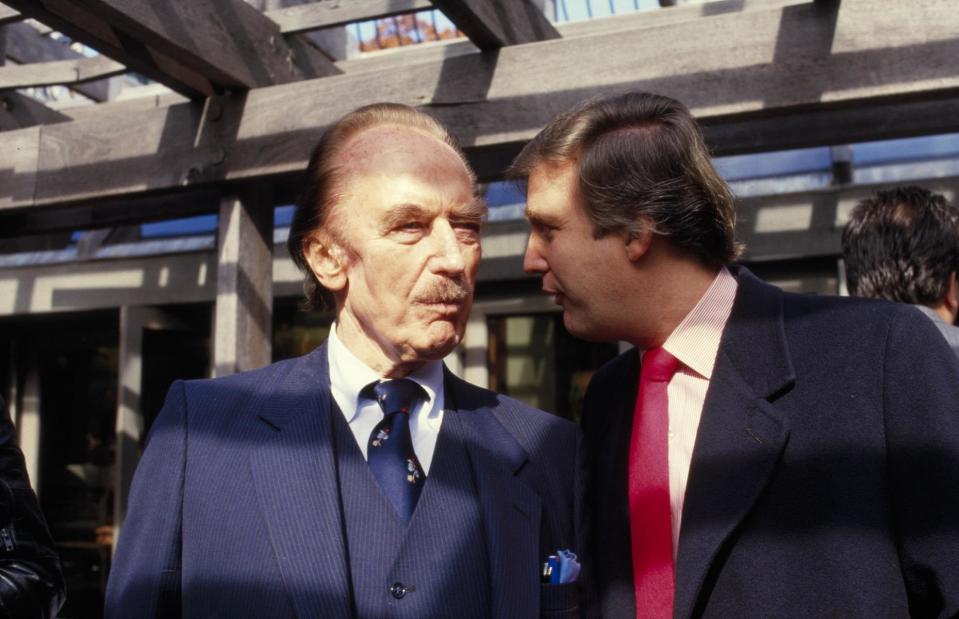
Gotfryd, Bernard, photographer, public domain, via Wikimedia Commons
Donald Trump famously revealed that he kick-started his career with a "very small" million-dollar loan from his father, the real estate tycoon Fred Trump. By the time Fred passed away in 1999, he’d amassed a fortune of around $300 million (£240m) and gained a reputation as "the Henry Ford of the home-building industry." So how did the son of a German barber lay the foundations for the Trump Organization?
Read on to discover the secrets of Fred Trump – the man who watered down paint, was arrested at a KKK rally, and made "The Donald" an eight-year-old millionaire. All dollar values in US dollars unless otherwise stated and historic currency conversions correct for the time.
From Bavaria to the Bronx
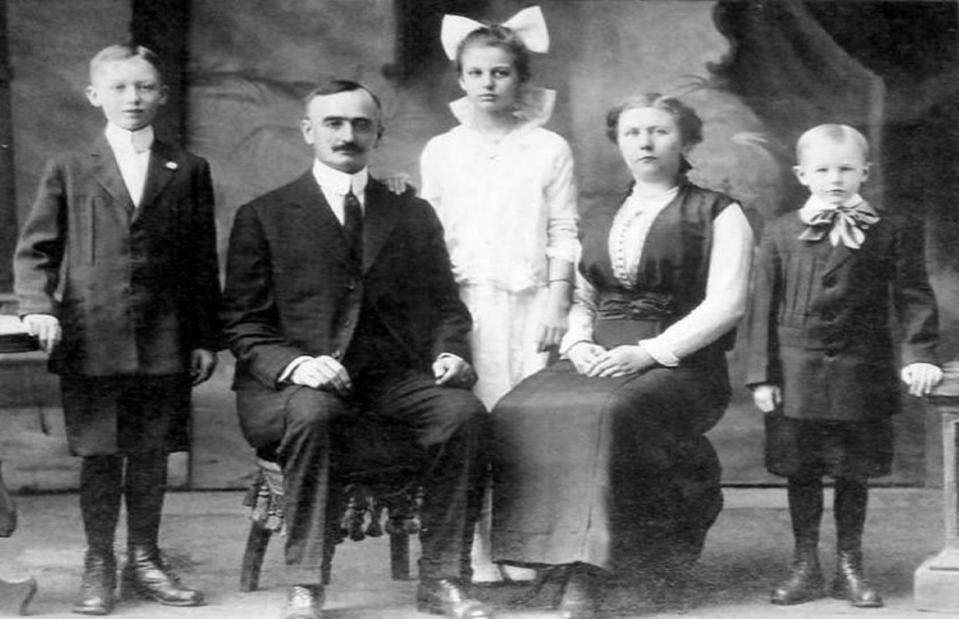
Anonymous author, public domain, via Wikimedia Commons
Fred Trump was born in the Bronx, New York City, on 11 October 1905. His parents were Friedrich and Elisabeth Trump, who had recently returned to the USA having been deported from their native Bavaria in Germany. Bavarian authorities had ordered Friedrich to leave as he was suspected of having moved to America in 1885 to avoid military service.
Elisabeth and Friedrich had ultimately planned to settle in Germany, but Friedrich was stripped of his Bavarian and German citizenship. Fred was born just three months after his parents returned to New York.
Fred was the couple’s second child, and he, his older sister Elizabeth and his younger brother John were brought up speaking German. This picture depicts the family in 1915, with Fred on the far left.
Sowing the seeds of a real estate empire
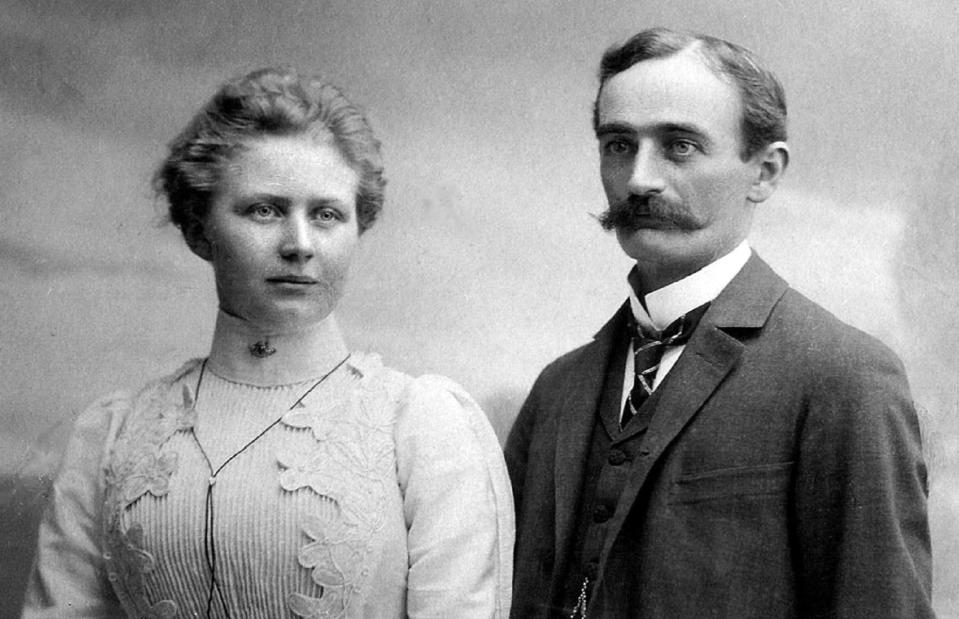
Lederle & Flocken, public domain, via Wikimedia Commons
Friedrich had made a modest fortune in the 1890s by building hotels and brothels during the Klondike Gold Rush. By the time he married Elisabeth Christ in 1902, he was already a wealthy man. He soon turned his attention to the growing real estate market in New York, snapping up land on Jamaica Avenue, Woodhaven.
"The war to end all wars"
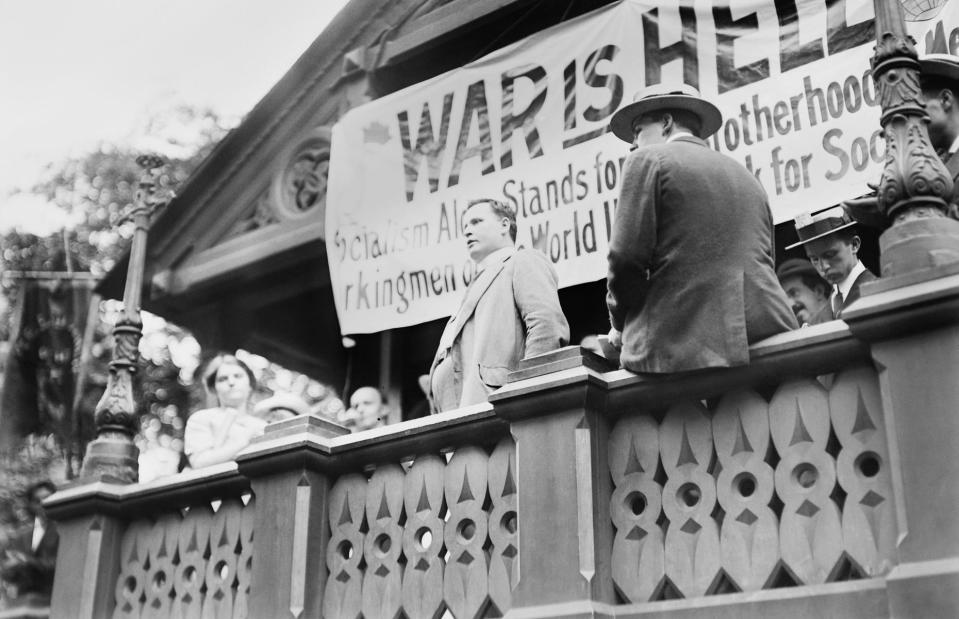
Everett Collection/Shutterstock
When the First World War broke out in 1914, the Trumps kept a low profile as anti-German sentiment was running rife in the US.
Friedrich had already anglicised his name to Frederick and dropped the "F" from his surname (Trump was originally spelled "Trumpf," and had sometimes even been recorded as "Drumpf"). However, as the global conflict raged, the family began to tell people they were Swedish in a bid to further separate themselves from their Germanic roots.
It was a lie that Fred Trump, and later his son Donald, would keep up for decades. Pictured is an anti-war rally taking place in New York's Union Square in 1914.
A victim of Spanish flu
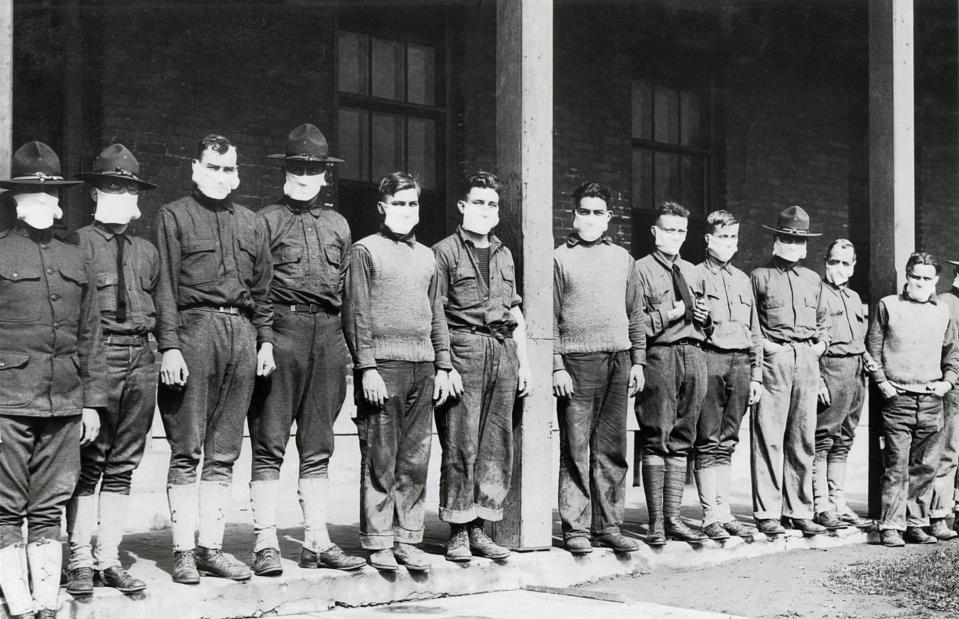
Everett Collection/Shutterstock
The First World War ended in November 1918, but tragedy was waiting just around the corner for the Trumps. According to family reports, Fred and his father were out walking on 29 May 1918 when the latter suddenly became extremely ill. Frederick was put straight to bed – but just a day later, he’d passed away.
What was initially diagnosed as pneumonia turned out to be something far more serious. Frederick was actually one of the earliest victims of the deadly Spanish flu pandemic that would go on to kill as many as 100 million people around the world over the next two years.
Building on Friedrich's legacy
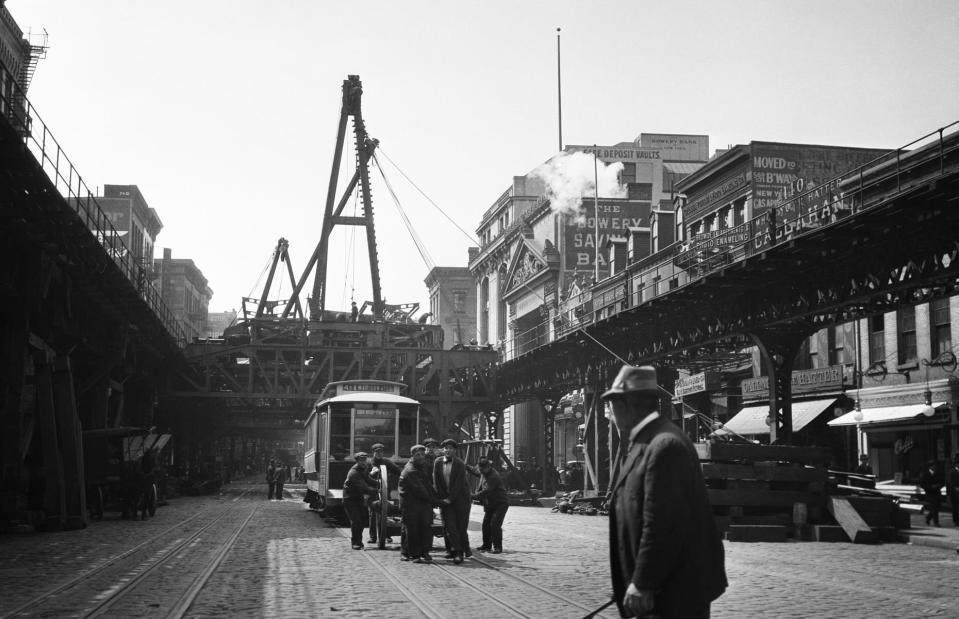
ClassicStock/Contributor/Getty Images
Frederick left behind a fortune worth $31,359, which is equivalent to about $615,000 (£515k) in today's money. With his father gone, the family’s business and financial management fell to 12-year-old Fred and his mother Elisabeth.
Despite her initial reluctance to embrace life in New York, Elisabeth sprang into action. The 37-year-old widow now owned a small portfolio of properties throughout the city, as well as various empty plots of land.
She hired contractors to build new homes – which were desperately needed as the NYC population grew – and sold them on, earning additional income from the mortgages she brokered. Pictured is construction work taking place in New York City in 1918.
Fred Trump's education
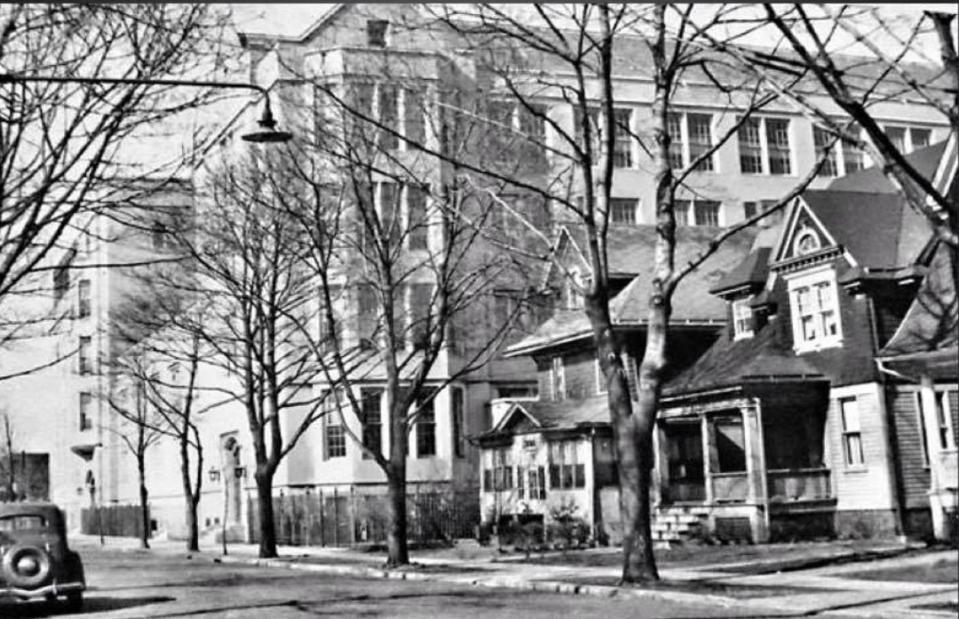
@theghostofqueenspast via Instagram
Meanwhile, Fred had started studying at Richmond Hill High School in Queens (pictured here in 1930). But it wasn’t just an academic education he was after. As well as helping his mother manage the family real estate, he also worked odd jobs as a caddy, delivery boy, and newspaper hawker.
Keen to become more involved in the construction industry, he started taking night classes in carpentry, reading blueprints, and plumbing. He’d later recall that he always wanted to be a builder, saying: "When I was a kid I used to play with blocks, erector sets and things like that."
Elizabeth Trump & Son
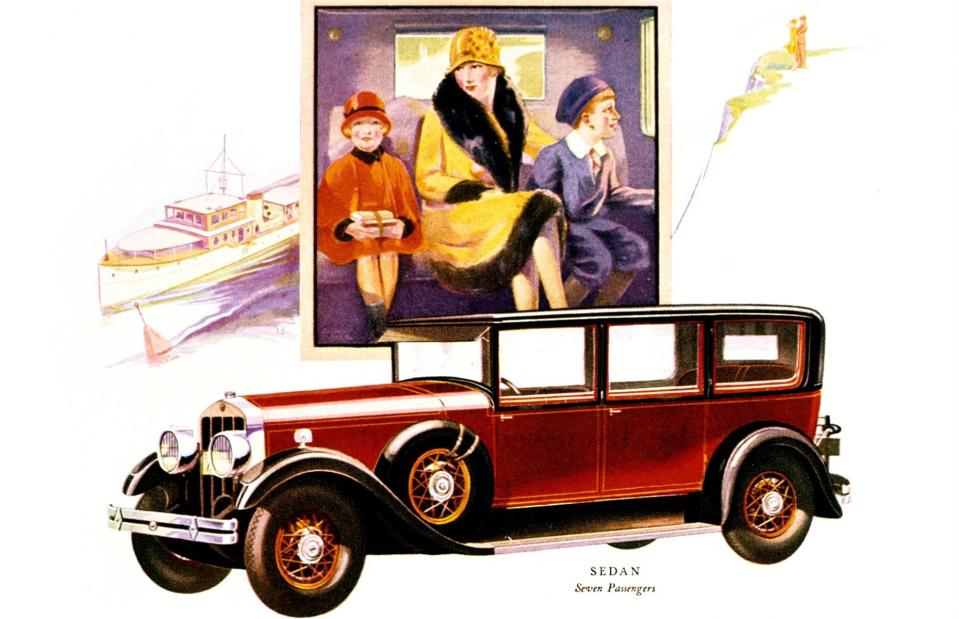
Nawrocki/ClassicStock/Contributor/Getty Images
Fred’s first real business success came when he was just 15 years old. As cars became increasingly accessible to the American middle class, garage extensions became big business – and Fred’s night school knowledge meant that he could start building them for friends and neighbours.
According to British newspaper The Independent, Fred decided to go into business with his mother because he was too young to sign the cheques himself. As of 1924, their company was known as Elizabeth Trump & Son, and it would later become the Trump Organization.
Like her husband, Elisabeth had anglicised the spelling of her name to make herself seem "more American," changing the original "S" to a "Z." This image is taken from an advert for the Franklin Airman Limited, circa 1928.
E. Trump & Son

The New York Historical Society/Contributor/Getty Images
In 1923, Elizabeth loaned her son $800 – the equivalent of around $14,000 (£11k) today – to build a family home in Woodhaven, Queens.
Fred reportedly sold the finished house for $7,000 (over $120k/£95k today) and used the proceeds to build more properties. Pictured is an area north of Jamaica Avenue, Woodhaven, photographed in the same year.
Arrest at a KKK rally
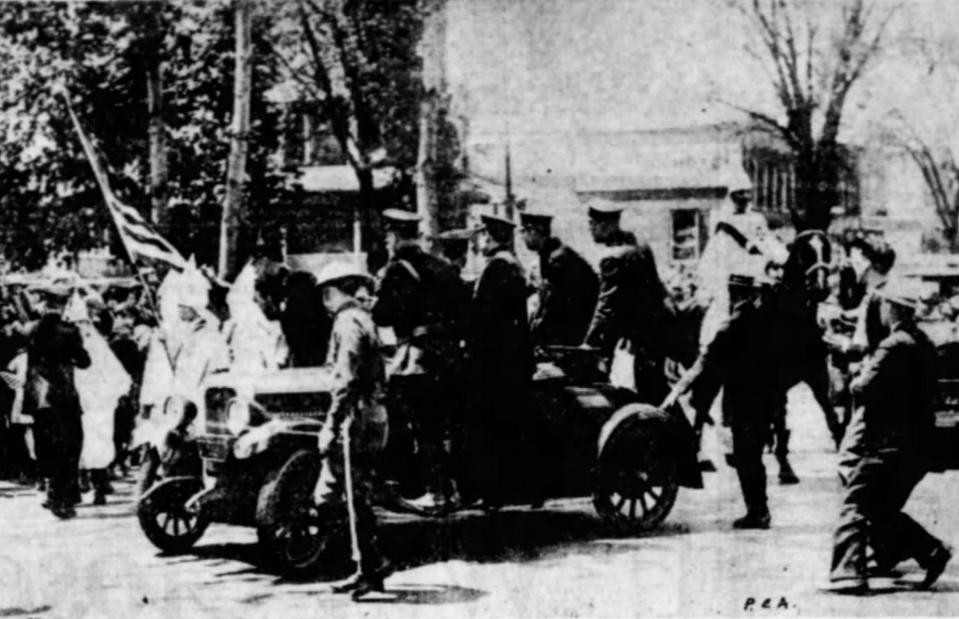
Brooklyn Daily Eagle, public domain, via Wikimedia Commons
As New York’s premier real estate tycoon, Fred Trump would later become a fixture in US newspapers. But his descendants have tried to hush up his very first media mention.
In June 1927, The New York Times reported that "Fred Trump of 175-24 Devonshire Road, Jamaica" was one of seven men arrested at a Ku Klux Klan (KKK) rally in Queens, where hooded Klan members attacked 100 policemen. The article goes on to say that Fred was discharged, so it’s possible he was just an innocent bystander who got caught up in the ensuing "free-for-all" brawl.
In interviews, Donald Trump has denied that his father had any involvement with the KKK. In fact, he's even disputed that Fred lived at 175-24 Devonshire Road, although other historical records have confirmed this. Pictured are KKK members confronting police in Queens on Memorial Day, 1927.
"Serve Yourself and Save!"
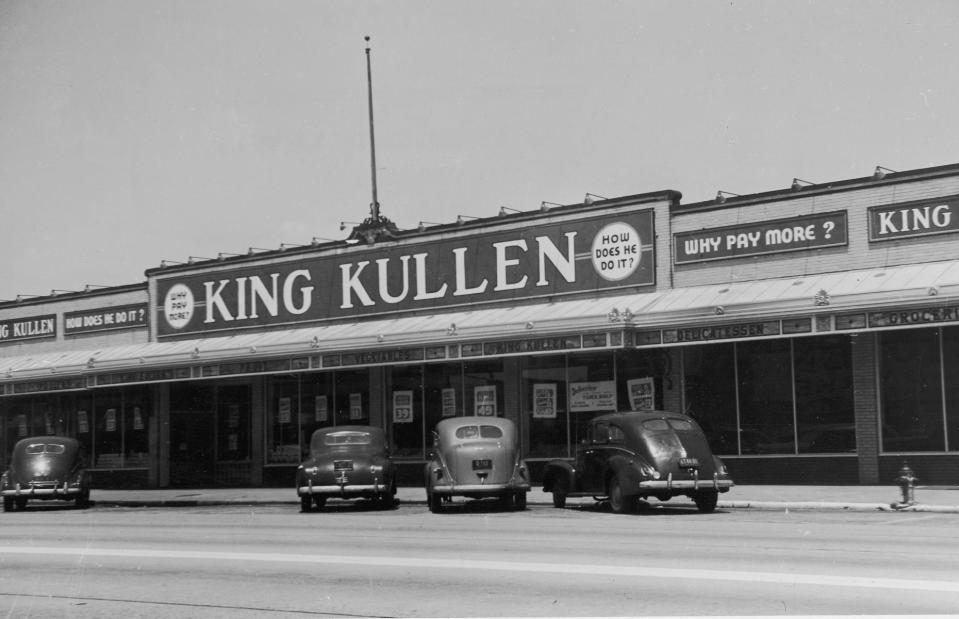
R. Gates/Staff/Getty Images
In 1933, around 13 years after building his first garage extension, Fred had his real big break. Inspired by the rapidly expanding King Kullen supermarket chain, Fred opened a self-service supermarket called Trump Market in Woodhaven, Queens.
It’s been described as one of New York City’s earliest modern supermarkets, signalling a shift away from independent shops where customers would typically be served from behind a counter.
Using the tagline "Serve Yourself and Save!" Trump Market became a huge success and Fred sold the business to King Kullen after just six months.
The Great Depression
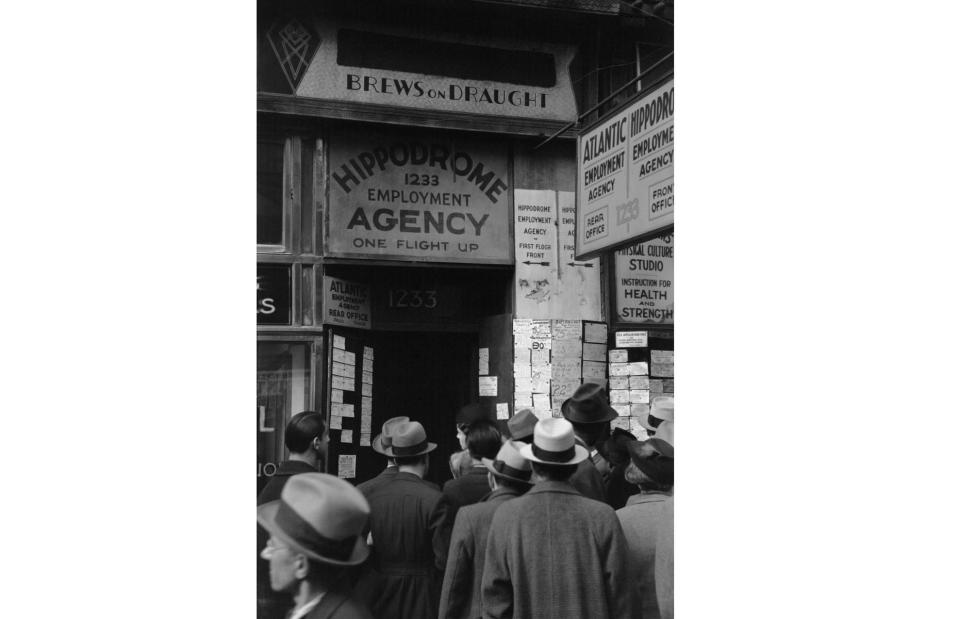
Everett Collection/Shutterstock
After selling Trump Market, Fred apparently vowed that he’d never name another business venture after himself again and began to focus on buying existing firms instead.
As the Great Depression crippled America and unemployment rates soared, Fred acquired the mortgage arm of Brooklyn-based J. Lehrenkrauss Corporation, a company that had declared bankruptcy in 1934.
The deal enabled him to buy up the business’s portfolio of properties, many of which were also facing financial difficulty, before selling them for a profit.
Marriage to Mary Anne MacLeod
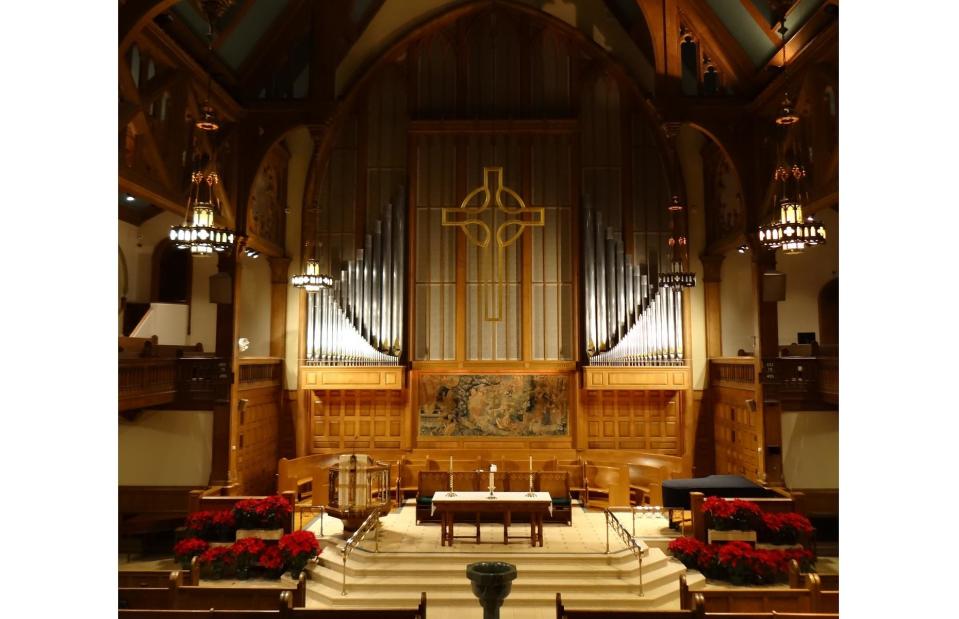
Andrew Smothers, CC BY-SA 4.0 , via Wikimedia Commons
Meanwhile, Fred’s personal life was also changing. In the mid-1930s, he met a Scottish immigrant called Mary Anne MacLeod at a dance party and, according to Trump biographer Gwenda Blair, announced to his mother later that night that he’d met the woman he intended to marry.
The couple got married on 11 January 1936 at the Madison Avenue Presbyterian Church (pictured) and set up home together in Jamaica, Queens.
The Trump Show Boat
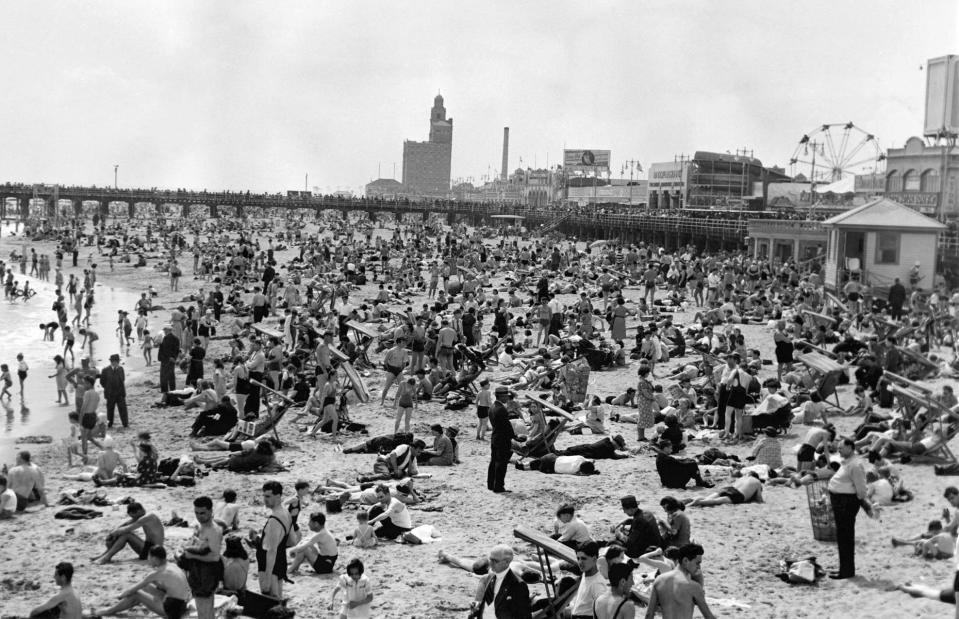
- / Contributor / Getty Images
By 1938, Fred had turned his one-man business into a company with 400 employees. These workers dug foundations for houses that were later sold for somewhere between $3,000 and $6,250 – the equivalent of around $65,000 (£51k) to $135,000 (£107k) today. These were relatively low prices to ensure Trump's business could remain competitive after the Great Depression.
Despite saying he wouldn’t use the Trump name again, Fred advertised his properties on the Trump Show Boat, a 65-foot yacht that he kept off Coney Island. The yacht blasted out The Star-Spangled Banner (America's national anthem) and dispensed balloons shaped like swordfish, which members of the public could redeem for up to $250 off the price of one of Fred’s homes. Coney Island is pictured here in 1939.
"The Henry Ford of the home building industry"
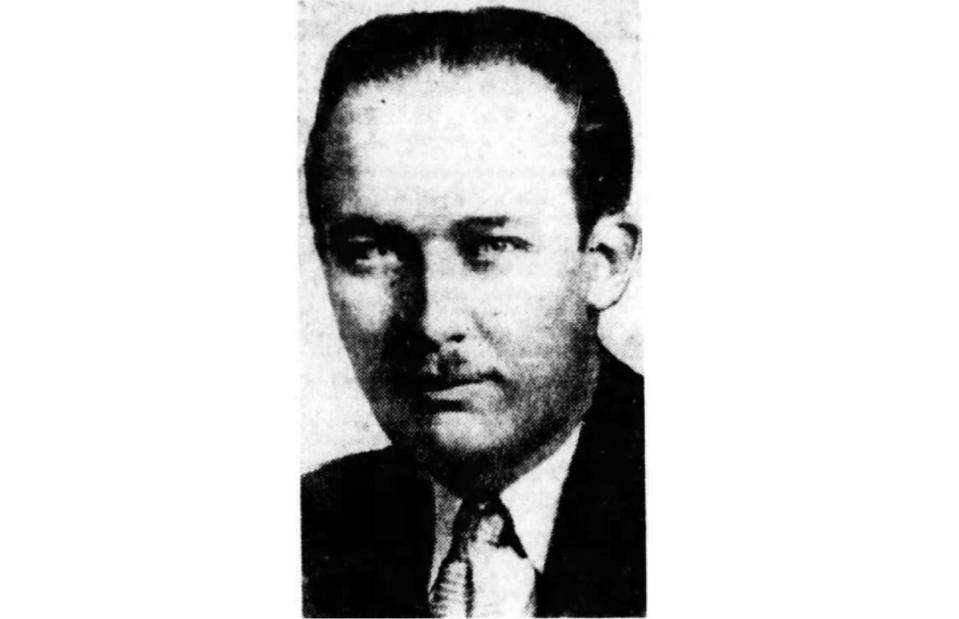
Brooklyn Eagle (Life time: N/A), public domain, via Wikimedia Commons
Fred's novel advertising campaign clearly paid off. In the late 1930s, the Brooklyn Daily Eagle referred to the businessman as "the Henry Ford of the home building industry," describing him as "one of the youngest and most successful builders in Brooklyn today."
According to the newspaper report, Fred had sold 1,300 homes in 16 years, 500 of which were in Brooklyn. Separate reports suggest that Fred boosted profits and kept costs low on his building sites by watering down paint and mixing his own chemicals.
"Too much and never enough"
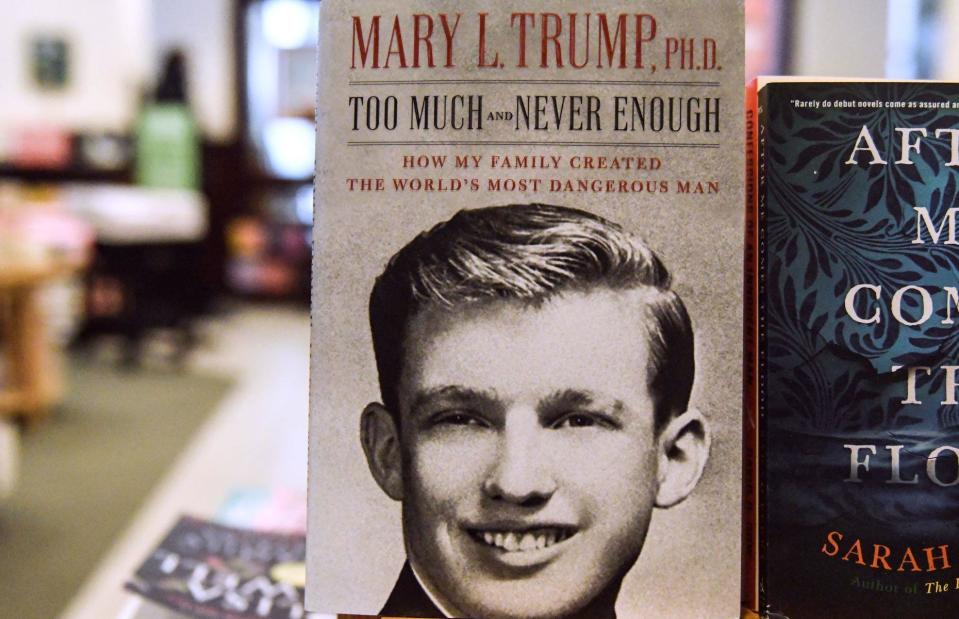
Stephanie Keith/Getty Images
Between 1937 and 1948, Fred and Mary had five children: Maryanne, a former federal judge who died last year, Fred Jr., Elizabeth, Donald, and Robert.
Fred was reportedly a strict father. According to his granddaughter Mary Trump, a psychologist who wrote a tell-all book (pictured) about her family in 2020, he was a "high-functioning sociopath." She writes: "Financial worth was the same as self-worth, monetary value was human value. The more Fred Trump had, the better he was. If he gave something to someone else, that person would be worth more and he less. He would pass the attitude on to Donald in spades."
Fred Sr. originally intended to pass his property empire on to his oldest son Fred Jr., who was Mary's father. However, he chose Donald instead after it became clear that Fred was set on becoming an airline pilot rather than a property tycoon.
Suspect tax schemes
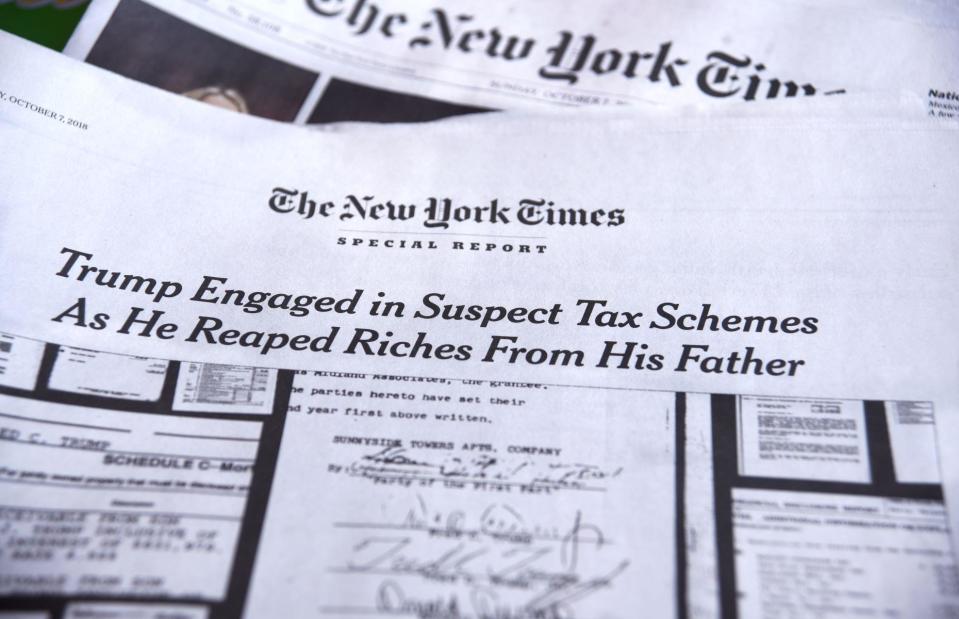
Robert Alexander/Getty Images
During World War II, Fred Trump kept a relatively low profile, concerned once more that his German heritage would make him unpopular, especially among his Jewish tenants. He spent the war years building barracks and apartments for the US military and, once the fighting was over, turned his attention to building affordable homes for veterans.
By 1964, Fred was "making millions" from his real estate empire according to an article in The Bridgeport Post. Not long after, Donald officially joined his father in the family business.
However, tax records sensationally revealed by The New York Times in 2018 (pictured) show that Donald had been "earning" around $200,000 (£167.5k) a year since he was three years old, essentially making him a millionaire at the age of eight.
Windfall profiteering?

Hassan Tahir, CC BY-SA 4.0 , via Wikimedia Commons
Over the course of his career, Fred built more than 27,000 apartments and homes across New York City. These included the flats in his flagship real estate development Trump Village, which was the only property project that bore his name during his lifetime.
But although some people praised him for making affordable housing during the Great Depression and post-war years, others were quick to point out his questionable business practices.
In 1966, Fred was investigated by New York’s State Investigation Commission for windfall profiteering, which is receiving unusually high income without explanation. He was suspected of overstating his construction costs to receive larger government grants, with the intention of investing the excess funds in other projects. While he was never indicted, Gwenda Blair claims that the state program that gave Fred the money was reappraised as a result.
"Old Man Trump"
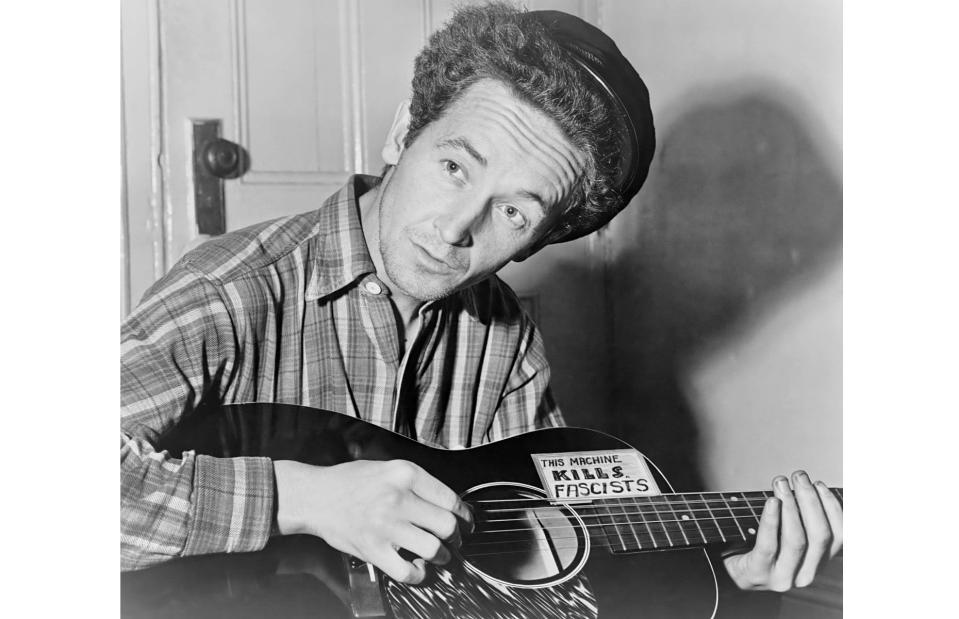
Al Aumuller, photographer; NYWT&S staff photograph; public domain, via Wikimedia Commons
Donald has consistently denied his father’s involvement with the KKK but that wasn’t the only time Fred has been accused of racial hatred. In 1973 – two years after Donald became the company president and around the same time as he rebranded the family business to the Trump Organization – Fred was sued by the government’s Civil Rights Division.
The Civil Rights Division claimed that the Trumps were deliberately not leasing the apartments in their Beach Haven complex to Black tenants, and as such were infringing the Fair Housing Act of 1968. Although they eventually reached a settlement, the damage had already been done.
Back in the 1950s, singer-songwriter Woody Guthrie (pictured) was a tenant at Beach Haven – or "Bitch Haven," as he liked to call it – and wrote a song that accused "Old Man Trump" of knowing "just how much racial hate he stirred up."
Millions of dollars in trust funds
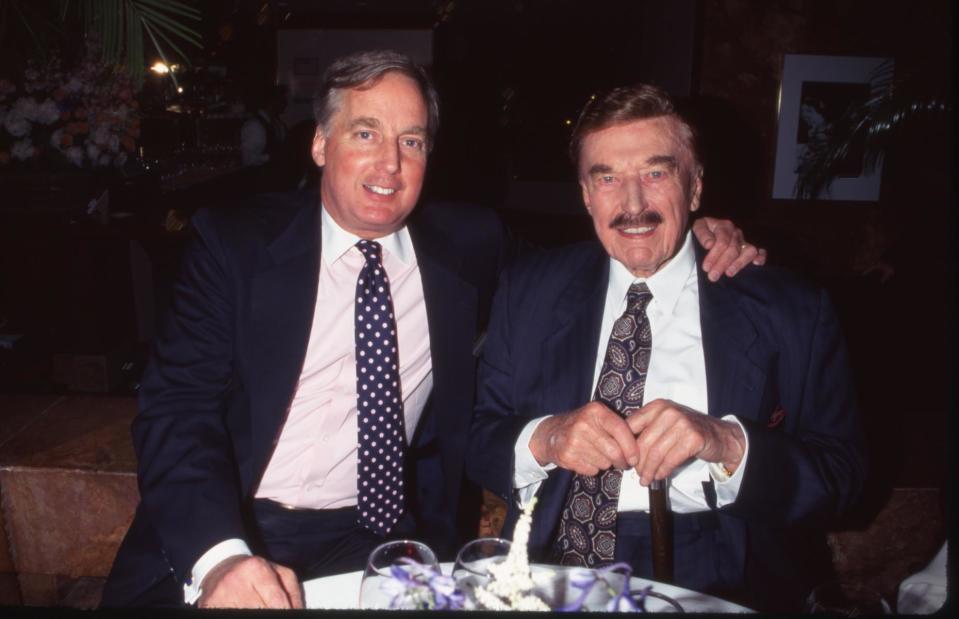
David Allen/Contributor/Getty Images
In 1976, Fred set up eight trust funds worth $1 million each for his children and grandchildren. In today's money, that's the equivalent of over $5 million (£4m) per recipient.
Despite giving away staggering sums of money to family every year – which included spending hundreds of thousands of dollars on Christmas gifts and dividends – Fred appeared on the inaugural Forbes 400 list in 1982, which charted the richest Americans.
At the time, Forbes estimated his net worth was $200 million, or around $600 million (£476m) in today's money. Fred is pictured here with his youngest son Robert.
Fred's final years
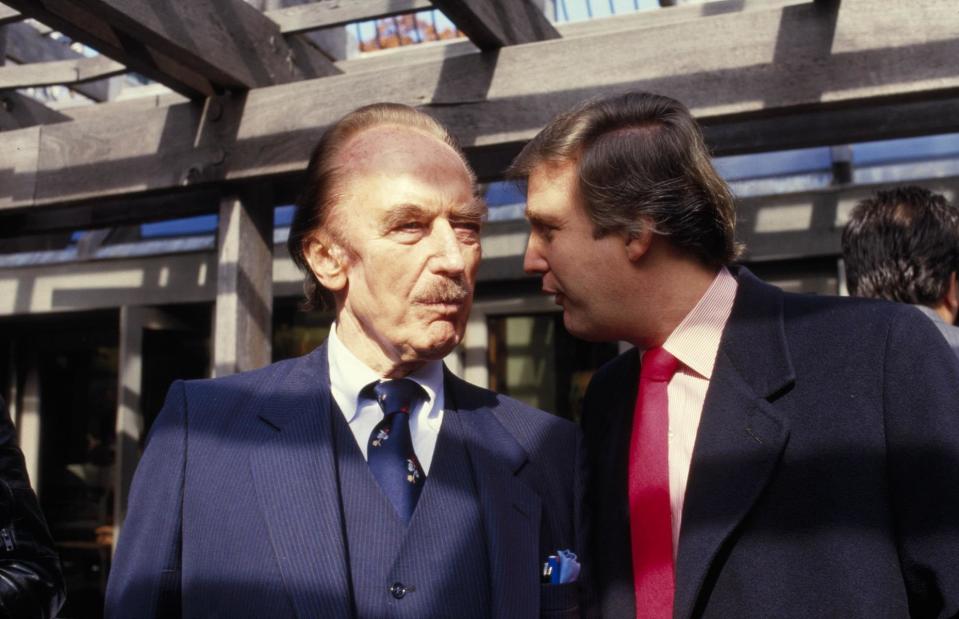
Gotfryd, Bernard, photographer, public domain, via Wikimedia Commons
In fact, Fred made provisions for all of his descendants – apart from Mary and Frederick, the children of Fred Jr., whom he wrote out of his will after their father died in 1981 from complications caused by alcoholism. Mary and Frederick disputed this on the basis that their grandfather had been diagnosed with Alzheimer's in 1993.
It was clear Fred and Donald had the closest relationship. The former POTUS has described his father as his "best friend," admitting he taught him everything he knows about business. Despite this, Donald's niece Mary has claimed that he was actively "unkind" to his father during his final years.
Fred's final years
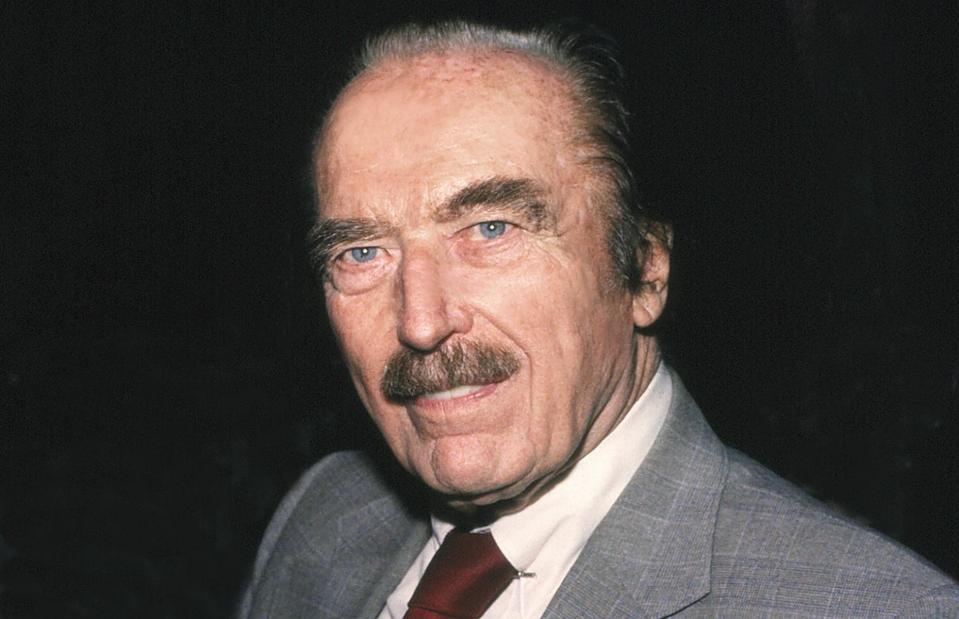
Jeffrey Asher/Contributor/Getty Images
In 1999, after a six-year struggle with Alzheimer's, Fred Trump passed away at the age of 93. Despite his huge wealth, he and his wife Mary still lived in the same 23-room mansion in Jamaica Estates, Woodhaven that he'd built for his family in the early 1950s.
The Trump finances are infamously shrouded in mystery, but estimates suggest the real estate mogul had a fortune of around $300 million (£240m) when he passed. Donald would later turn this considerable fortune into a breathtaking $10 billion (£8bn) – apparently using the same ruthless measures as Fred himself.
Now discover the story of Donald Trump's German grandfather, who started the Trump dynasty.

 Yahoo Finance
Yahoo Finance 